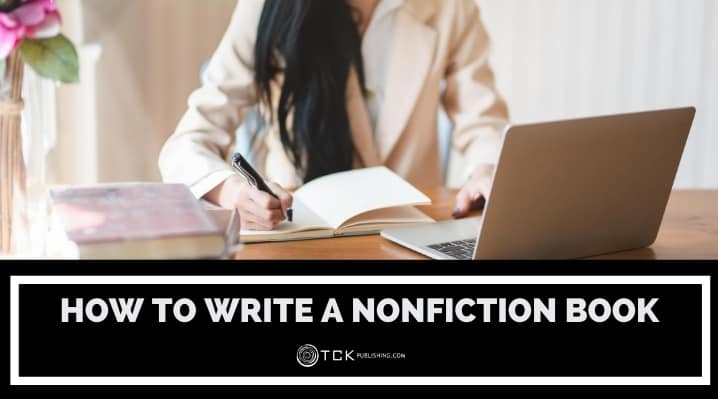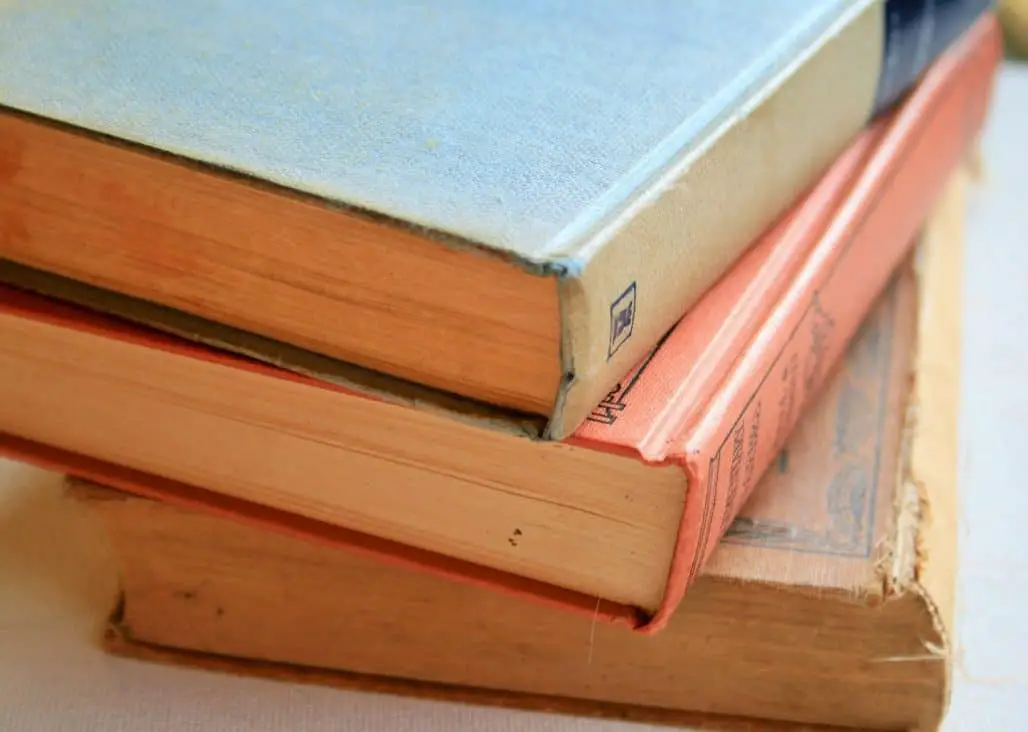
So you’ve decided to write a nonfiction book.
Now it’s my job to show you how to write your book as efficiently and effectively as possible, so you can get your message out to readers all over the world.
At first, writing a book can seem a little intimidating…
- Where do you start?
- How do you get all your thoughts lined up on the page?
- How do you know what to write in the book and which parts to leave out?
- How do you write a book that will make a difference in the lives of your readers?
We’ll answer all of these questions and more in this detailed guide to show you how to write a nonfiction book.
How to Write a Nonfiction Book
While writing a nonfiction book takes some time and energy, it really all comes down to following 11 simple steps (whether you’re writing about self-help, business, gardening, fitness, lifestyle, nutrition, or any other topic).
The first step is…
1. Brainstorm Nonfiction Book Ideas
You may already have a great book idea and feel like you’re ready to sit down and start writing, but I still suggest creating a list of as many nonfiction book ideas as you can think of.
Brainstorming book ideas and keeping them organized in a list is incredibly important because writers and creative people tend to fall prey to “shiny penny syndrome.”
When you’re halfway through writing your book, coming up with a new, more exciting book idea or project could throw you off track completely. We often chase shiny pennies or new opportunities because they feel more exciting and less challenging.
By maintaining a list of all your best book ideas in one place, you won’t feel like you’re missing out on a new opportunity every time a new idea comes to you.
2. Do Market Research
Market research is crucial because it allows you to find out who your ideal readers are and what whey want.
We already posted a detailed guide to book market research, so make sure to follow that process before you sit down to write your book, or you may end up wasting your time by writing about something readers aren’t interested in.
Once you’ve created your list of book ideas, ask yourself these questions to get clarity on which ideas you should consider top priority:
- Which book idea are you most passionate and excited about?
- Which book idea are you uniquely qualified to write?
- Which book will be the most valuable to readers?
- If you only had 90 days left to live and could only finish one book before you go, which one would it be?
Whether you’ve picked your best book idea or you’re still unsure at this point, it’s time to start with market research on your top book ideas to verify that the book you plan to write will actually be in demand.
3. Identify Your Book’s Target Audience
Once you’ve identified the topic you want to write about, you can start doing research on your target audience to learn how to write a nonfiction book readers will love. This will help you decide on your final topic and guide your approach to your writing.
Ask yourself some key questions about your ideal reader, the person you’d love to have find and buy your book:
Level of Expertise
Is your perfect reader already familiar with the subject and looking to gain more information?
Or are they a beginner who wants a straightforward introduction to your topic?
Attention Span
Is your reader someone who has lots of time to spend on a very in-depth, complicated book, or do they want quick tips and simple, useful points that will help them get started right away?
Key Interests
What specific topics are your ideal readers interested in?
Go online and check out some popular forums related to your topic. See what questions people are asking, as well as what they already seem comfortable with.
Check out Amazon reviews for other books that might be similar to yours, too. What did people love about those books? What did they hate? Take notes on what your readers mention in these book reviews—this is great background research for writing your own nonfiction book on the topic, because you’ll be able to see where the gaps are in the market.
How to Find Your Target Audience
Let’s take a look at how to find your target audience for a natural wellness book as an example.
If you’re interested in natural wellness, do you want to write for an audience that already takes herbal supplements, or one that has heard of them but has no idea how to get started?
Go online to read some forums and blogs about natural wellness and see what people are asking. Maybe they’re looking for quick, easily applied information on how to stop using prescription drugs for their problems.
They don’t seem to give good reviews to complicated books that get into the botany and biology of natural wellness therapies, but they give great reviews to easy-to-understand books that clearly outline what supplements to use for what problems.
Great! This gives you a clear idea of who your ideal target audience is: a person who’s got some physical ailments or issues that they want to be free of without using strong prescription medication, who’s short on time, and just wants to feel better quickly without having to plow through a dense medical text.
You now have a basic profile of your target audience. You know what their main concerns are and what type of book they’re looking for.
4. Identify the Problem You Want to Solve
Now that you know what you want to write about and what your ideal reader is looking for, you can get to the real core of writing a great nonfiction book: identifying the problem you want to solve.
People primarily read nonfiction books because they’re looking for answers to a particular problem.
What problem can you help solve better than anyone else?
Let’s say you want to write a natural wellness book and want to help people fix their back pain without using opioid medications or even over-the-counter pain pills by using a combination of herbal supplements and a stretching routine you created.
Because you did your research in Step 2, you already know that they’re looking for simple, straightforward information that they can put to use right away, presented in a friendly way that doesn’t make your book seem overwhelming or feel like a textbook.
By knowing this, you’re now able to provide the kind of value that your readers are looking for—and that means you’re already a step ahead of the competition.
5. Pick a Bestselling Book Title
Picking a great book title is a crucial step in the process of getting readers to actually read your book, take action, and benefit from your expertise.
The title comes out of all the market research you’ve done to this point. You’ve figured out who your potential readers are, what they’re looking for, what questions they’re asking, and what problems they want to solve.
For nonfiction, it’s best to use a catchy, memorable title and a descriptive subtitle that explains how your book solves their problem. If possible, make sure your title includes keywords that your readers might use to ask about their question or problem online.
For example, some potential titles for a back pain book might be:
- Beat Back Pain Naturally: Ditch the Painkillers and Free Yourself from Aches with Easy Stretching
- Stretch Your Pain Away: How to Beat Back Pain and Live Better without Drugs
- Back Pain Be Gone: Natural Remedies and Simple Stretches to Help You Beat Back Pain Forever
For more help choosing the right title for your nonfiction book, check out this article that includes case studies and examples of finding the perfect book title.
6. Write a Book Outline
While there are plotters and pantsers in the world of fiction writing, very few nonfiction authors can get away with writing by the seat of their pants.
Because you’re writing specifically to help your target audience solve a problem, you need to be systematic in how you approach your book.
Nonfiction readers aren’t just paying for information; they’re paying for information organized in a way that is most useful, accessible, and helpful for them.
That’s why writing an outline is so important, because it ensures you have a structure to your book that is useful to your audience, instead of just a collection of random information.
Your outline should be as detailed as you can possibly make it. A few hours of outlining your book will save you hundreds of hours when it comes to writing the book.
See our full detailed post on how to write a book outline and download our list of 11 questions that will help you write a nonfiction book outline.
7. Write the First Draft
While sitting down and writing your nonfiction book might seem hard, you’ve actually done the hardest part already: you’ve identified your audience and the key problem you’re going to help them solve and you’ve created a thorough, solid outline.
Download our free template for writing a nonfiction book to get started. You can also sign up for our course, How to Write Nonfiction Like a Pro, to discover dozens of techniques for writing better nonfiction in less time.
At this point, you’re still not trying to create a perfect, finished book. You’re just trying to get each step filled out and complete, in an approachable format that meets your readers’ needs and expectations.
Don’t worry about making everything perfect! Polishing everything up comes later. In this step, you’re simply focusing on delivering your message to your reader as thoroughly as you can, filling out every point on your outline clearly and completely.
Pretend you’re having a conversation with your reader. They’ve asked you about a problem they’re having and you’re chatting with them, sharing your insights and giving them suggestions for how they can fix it. You’ll have plenty of time for editing, research, fact checking, and revisions after the first draft is completed.
8. Include Examples and Case Studies
When you’re writing your nonfiction book, always be sure to add relevant, targeted personal examples at major steps along the way.
We all identify with stories. Hearing about other people who have been in our shoes, had similar problems, and overcame them gives us the feeling that we can also make changes and get better results. We love to hear how other people have come out ahead when dealing with problems like ours and it helps to know that the strategies and tips you’re suggesting have worked in the real world.
You don’t necessarily have to add these while you’re writing your first draft. Get through the book first, then go back and see where it would make the most sense to add supporting examples.
How to Get Personal Examples for a Nonfiction Book
To get personal examples from other people, consider starting a blog where you answer questions, participating in an online forum on your topic, or asking friends and family to help you by trying out your strategies and sharing their results.
You can use the feedback people give you when you share your insights to fill in personal examples in your book (with the person’s permission, of course!).
You can also use online services like Help a Reporter Out to find people to interview about how they’ve coped with problems similar to the one you’re tackling in your book. Most of the time, people are happy to be interviewed and to contribute quotes and ideas for your book!
Always be sure to attribute the person fully (such as saying, “Let’s look at how Jane Doe of California did it”) and make sure that the attribution is okay with them—some people might want to use a pseudonym or not have their profession or location identified, depending on the topic.
9. Editing
This next step is going to require some discipline and courage on your part, because it involves taking an objective look at your own writing. Once you’ve celebrated the milestone of finishing your first draft, it’s time to start editing and revising.
When you self-edit, you re-read your book as though someone else wrote it, taking note of anything that doesn’t make sense, places that could use more details or support, places where you drone on needlessly, and errors like incorrect facts, typos, or other mistakes.
Self-editing is a hard skill to learn, but it’s worth making the effort, because the better your writing is when you start sending your draft manuscript to beta readers and to a professional editor, the better your finished book will be.
You’ll also spend significantly less money with a professional editor and less time overall, getting your book out into the market faster.
For more tips on self-editing your work at any stage of the writing process, check out this great post on how to edit your own book.
10. Get Feedback from Beta Readers
Getting feedback from other people is a key part of the writing process, especially for a nonfiction book. You need to know what’s working, what isn’t, what’s appealing to people, and what’s boring them or turning them off.
There are lots of different ways to find and work with early manuscript readers, often called beta readers. Check out our guide to working with beta readers for more on how you can improve your writing with helpful feedback.
When you’re first getting started as a writer, your best place to look for beta readers is in your personal circle. If you’re part of a writer’s group, great! These folks would probably be delighted to read your manuscript and critique it.
Ask your beta readers to read your book thoroughly and to spend some time thinking about it. They should approach it like they’d just bought the book to help them deal with the problem you’re trying to help your target reader solve, and let you know their reactions based on that perspective.
Once you’ve gotten feedback, read through your book once more and examine where they pointed out issues. If several readers have pointed out problems in the same area, or agree on some point, then you can safely assume that lots of your eventual readers will have the same comments—it’s best to fix these now!
If only one or two people have an issue, then take a careful look at what they’re discussing and decide whether it makes sense to adapt, delete, or otherwise address the potential problem.
11. Hire an Editor to Revise Your Book
While enthusiastic beta readers are worth their weight in gold, nothing can replace a skilled professional editor.
Pros are trained to probe deep into your writing, finding quirks and issues that even the most engaged amateur might not notice at first. They’re great at asking you questions to help draw out the best parts of your writing style and teach you to write better for next time.
Readers really do know the difference, and while they might not care whether your book has the Harper-Collins logo on it, they will care if it’s full of sentence fragments, misspellings, gaps in logic or sequence, and other issues that a dedicated pro could have helped you resolve.
You can find professional editors by checking LinkedIn, writers’ forums, or using book editing services or agencies. You can also post your editing job with groups like the Editorial Freelancers Association or the Northwest Independent Editors Guild.
We also have a complete guide to finding an editor that walks you through each step of the process.
12. Get Your Book Published
You’ve made it this far—congratulations! You’re almost there!
The next step to becoming a published nonfiction author is to get your book published.
You can check out our submission guidelines to see if it would be a good fit for us to publish your book for you.
You can also review our list of nonfiction publishers to find another publisher that might be a good fit for you.
If you plan to work with a Big Five publisher, you may want to find a literary agent, but just realize it will take at least two years from the time you get a book deal until your book is actually published and available for sale. You’ll also have to write a book proposal for a nonfiction book, which is like writing a business plan for a startup company.
If you want to self-publish your book, you can check out our free course on self publishing.
What Makes a Good Nonfiction Book?
Writing a great nonfiction book doesn’t have to be hard if you follow the writing system on this page.
If you take the time to do some research, organize your thoughts, and find a problem that you’re uniquely qualified to help people solve, you’re well on your way to writing a non fiction book that can land you at the top of the bestseller charts.
How to Write a Nonfiction Book: Keep Writing!
Once you’ve finished writing your nonfiction book, I highly recommend you write another book!
That’s because the best way to sell more books is to write another one. As you start marketing your book, getting reviews, and winning new fans and followers, you want to have other offerings you can point them to. Most of the time, that’ll be another book—although it could also be a course, webinar, coaching, or another product that will help them make the most of what you have to teach.
By offering more than one book, you give your fans a way to keep connecting with you—and to deepen that connection, building a relationship of loyalty and trust. After all, your readers loved your first book; they’re sure to want more from you!
So once you’ve finished your first book, head back to the top of the list and start at Step 1 again, ready to write your next bestseller!
Did you find this post helpful? Let us know in the comments below!
For more help on writing a non fiction book, read on:
-
18 Nonfiction Writing Courses to Help You Plan and Write Your Next Book
- What It Actually Takes to Earn a Six Figure Income Writing Nonfiction Books
- How to Write a Book Proposal
- How to Write Book Titles That Sell: 5 SEO Tips for Creating a Nonfiction Book Title So You Can Sell More Copies
Tom Corson-Knowles is the founder of TCK Publishing, and the bestselling author of 27 books including Secrets of the Six-Figure author. He is also the host of the Publishing Profits Podcast show where we interview successful authors and publishing industry experts to share their tips for creating a successful writing career.




I love your page Kate, Excellent tips!
I am very thankful for sharing your blog.
You may also read my blog on Weapons Of War by Robert Wright
Hope this will helps
Hi Robert, thanks for your comment! We’re glad you enjoyed the post :) and thanks for sharing your blog!